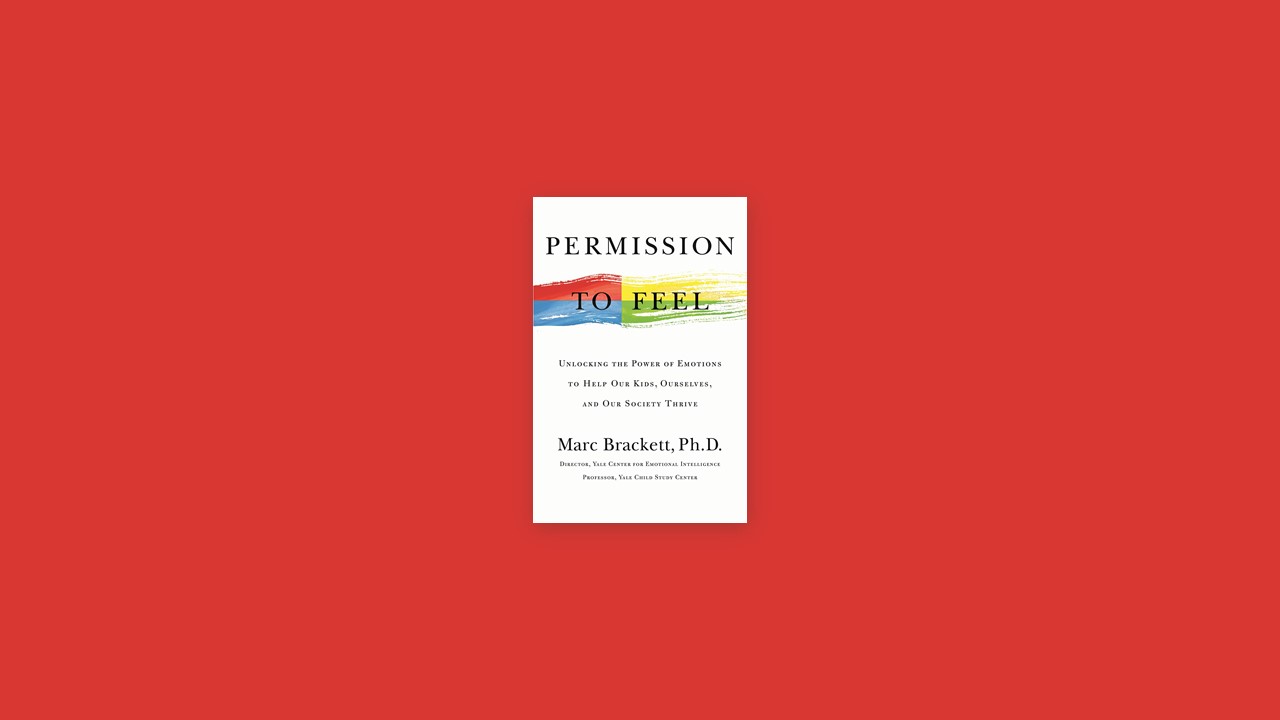Kindle | Hardcover | Audiobook
Permission to Feel
Feelings are a form of information. They’re like news reports from inside our psyches, sending messages about what’s going on inside the unique person that is each of us in response to whatever internal or external events we’re experiencing. We need to access that information and then figure out what it’s telling us. That way we can make the most informed decisions.
That’s a major challenge. It’s not as though every emotion comes with a label telling us precisely what prompted it, and why, and what can be done to resolve it. Our thinking and behavior absolutely change in response to what we’re feeling. But we don’t always know why or how best to address our emotions.
Emotions Are Information
Scientists didn’t like emotions because, unlike intelligence, they can’t be measured with standardized tests. IQ relies primarily on “cold” cognitive processes such as remembering a strand of digits or historical facts, while emotional intelligence relies on “hot” social-emotional-cognitive processes that are often highly charged, relationship driven, and focused on evaluating, predicting, and coping with feelings and behaviors—our own and other people’s.
Everything in this book is based on the past five decades of research into the roles—plural—that emotions play in our lives. At their highest level, from an evolutionary perspective, emotions have an extremely practical purpose: They ensure our survival. They make us smarter. If we didn’t need them, they wouldn’t exist.
RULER to Become an Emotion Scientist
Having emotion skills—giving yourself and those around you the permission to feel—doesn’t mean you become a doormat or you roll over and agree with everything everyone else says or does. People higher in emotional intelligence are just as likely to push back when attacked—but they will have an easier time dealing with the emotions in a confrontation and will be more skillful at finding a peaceful solution.
None of this means that the emotionally wise person is perfect. You’re tired, you’re angry, you’re worried about something, and so naturally you may not pause to think before you react. You have to give yourself permission to feel even that. You’re going to fly off the handle. You’re a work in progress. If you mishandled it today, and you have sufficient emotion skills to recognize that, you may do better tomorrow.
R: Recognizing Emotion
As a tool to help people recognize emotions, the Mood Meter was first used in The Emotionally Intelligent Manager, a 2004 book by David Caruso and Peter Salovey.
The Mood Meter is designed to chart every feeling a human being can experience and project it onto a graph similar to the one Russell proposed. It allows us to chart our observations about pleasantness and energy in order to understand key information about emotions at a glance. Using the tool, we can readily visualize hundreds of emotions, from rage to serenity, ecstasy to despair, their co-occurrences, and everything in between.
The recognition skill improves only with practice. And because it relies on nonverbal information, we have to be sensitive to the sensations and nuances of emotions, our own and those of other people. If you overthink it, you’re doing it wrong. At this point in the process, we’re not looking to nail down the precise emotion, just the general area where it exists—the quadrant of the Mood Meter. Are we feeling up or down? Pleasant or unpleasant? It’s the kind of question you can ask yourself every hour on the hour and get a different answer. You can try the same thing with the people in your life—whether it’s your spouse, your boss, your kids, or the desk clerk at the library. There’s no penalty for exploring and quite a bit of potential benefit from developing this skill. In any event, it’s the first necessary step.
U: Understanding Emotion
Can you imagine how much miscommunication is caused by the inability to see behavior as simply a signal for emotions? This is why we have to be emotion scientists and not emotion judges.
Understanding is in some ways the most challenging skill to acquire. It calls on all our powers of analysis to honestly and correctly answer that powerful three-letter question: Why? Once we ask it, of our own reasons for feeling something or of someone else’s, we begin a line of inquiry that can go on for some time. What caused this emotion? Once we find an answer, the next question instantly arises: Why, of all the possible reactions, that particular one? At some point we need to feel as though we’ve answered that original Why? But if we stop short, we may never understand our emotions. Sometimes, granted, it takes real bravery to follow the investigation to the end. That’s when our skills make us scientists. And paired with genuine motivation, this skill empowers us to be better friends, family members, students, colleagues, and partners.
L: Labeling Emotion
After the challenges of U—Understanding emotions—Labeling should feel like a break. We all know plenty of words that describe emotions, feelings, and moods. Even if we don’t normally use them in connection with our own lives, we read them and hear them all around us. A great deal of life is defined by words such as ecstatic, anxious, furious, content, dubious, hopeful, acquiescent. Any thesaurus or dictionary can handle that part of this skill. Our job then becomes just to begin affixing those commonplace terms to what we’re feeling inside. When we settle for the six or seven words that we all rely on, we’re shortchanging ourselves—it’s like taking a vow of emotional poverty when riches await. Ask yourself now: How am I feeling? And try coming up with as many words—more thoughtful and precise ones than you usually deploy. That’s how this skill improves. Without it, we remain unknown to ourselves or anyone else, which brings us to our next step: expressing emotion.
E: Expressing Emotion
What emotions do you show the most, at home and at work? Are they what you are really feeling or only the ones you feel you’re allowed to display? How would your spouse or partner, colleague or boss, or kids rate your expression skills?
Are you comfortable expressing the emotions in each quadrant: yellow, red, blue, and green? What rules have you created about what you’ll express to whom? How much emotional labor are you putting in each day? Is it affecting your performance at work, your relationships, your overall well-being?
These are tough questions to answer, I realize. But they’re the ones we need to ask ourselves regularly.
What can we do when the fear of stigma chokes off our ability to express? First: Give ourselves and others permission to feel. Accept and acknowledge that there’s no shame in expressing our emotions. We don’t need to fix or hide what we feel. Expression enhances our lives in many ways, not all of them obvious. It propels us forward, in this case to the final step—Regulation.
R: Regulating Emotion
Attention-shifting strategies take many forms, but all are based on the same principle—that we can temper the impact of an emotion by diverting our attention from it. It can be as simple as looking away from a stressful encounter or as reflective as delivering a self-talk as though we were speaking to a friend who was under duress, telling them to visualize being on a beautiful beach.
Bored waiting in a cashier line, so you check your Instagram feed? That’s distraction. Pretty common today. Not terribly useful. You could have devoted those moments to thinking about a new business idea you had or planning your vacation. Still, it beats standing there and steaming.
Or your credit card payment is due tomorrow and your checking account balance is low, so you ease the angst by vowing to change your spending habits and start saving. If it makes you feel better, fine. It’s a good way to avert moments like this in the future. But diverting your attention won’t pay the bill that’s staring you in the face.
There are a few, final aspects of Regulation we need to consider. Because emotion regulation requires brainpower—moving from automatic and unhelpful to deliberate and helpful strategies is hard work!—it depends on seemingly unrelated factors such as diet, exercise, and sleep. When we eat poorly, our minds don’t function properly. Too much sugar or refined grain causes our blood glucose to spike and then plummet, which affects cognitive functioning and self-control, especially around healthy eating. Easy solution: Make sure you have some healthy snacks in your desk at work or set a reminder on your phone to ensure you nibble every three hours or so.
Poor quality or insufficient sleep has similar effects on our emotions—when we’re tired, our defenses are down and our ability to function mentally is low. Sleep serves a restorative function. When we don’t get enough, or we get too much, we show more symptoms of anxiety and depression, greater fatigue, and hostility. Inadequate sleep is associated with reduced connections between brain regions responsible for cognitive control and behavior and the use of effective emotion regulation strategies.



